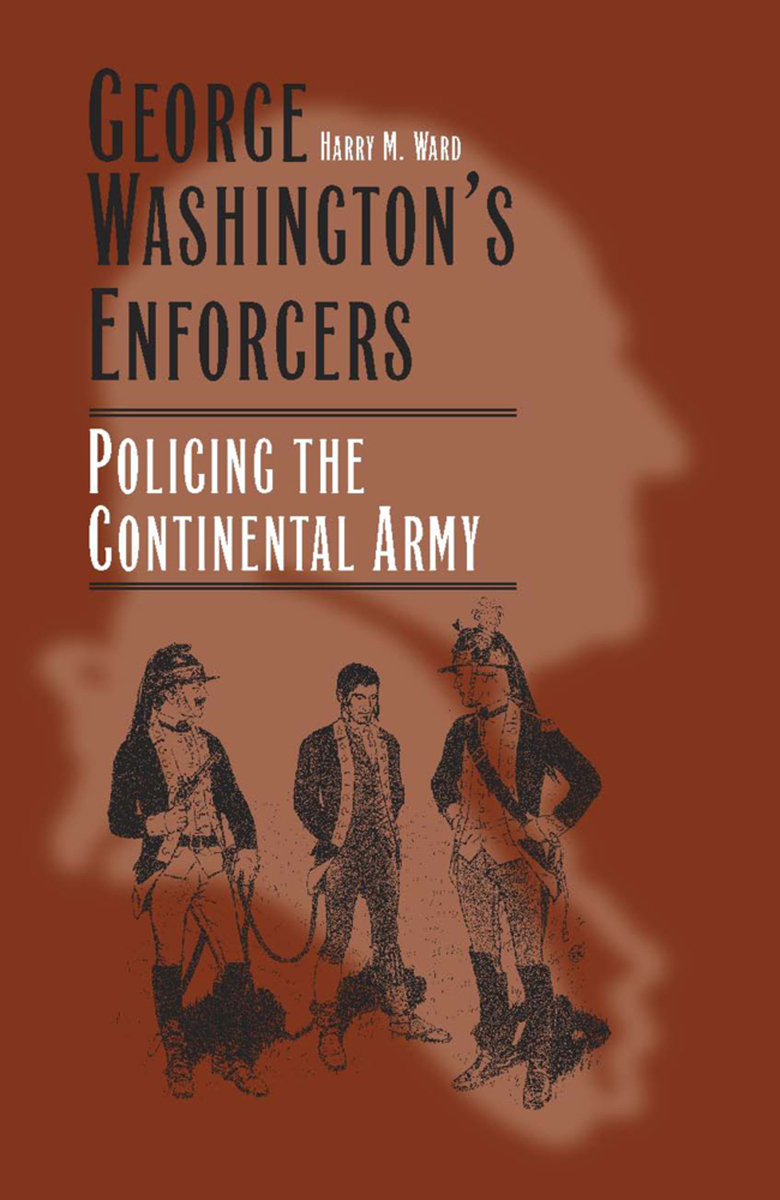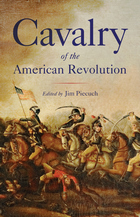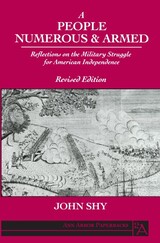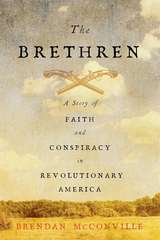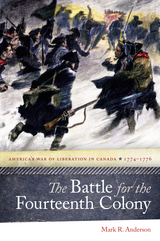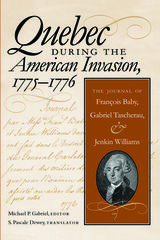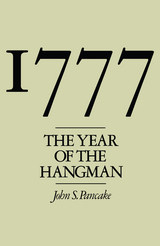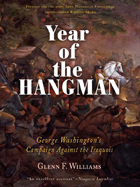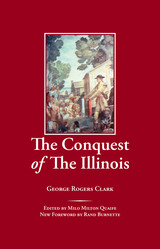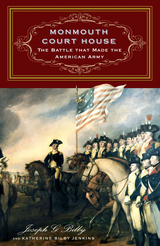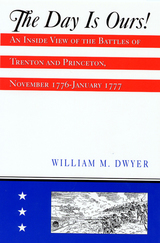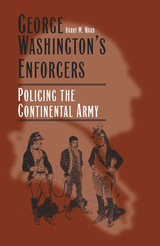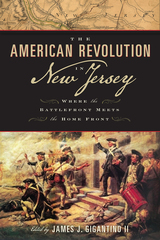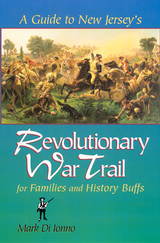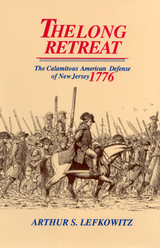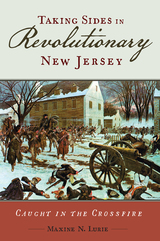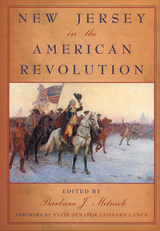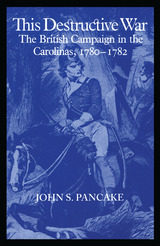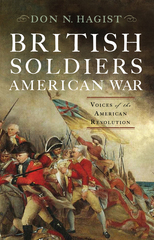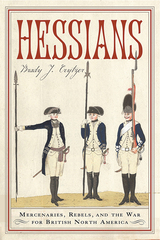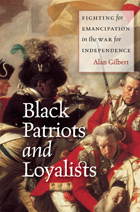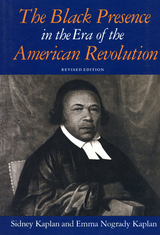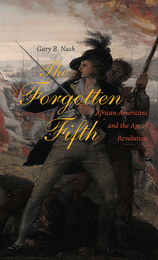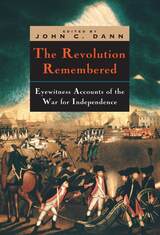Paper: 978-0-8093-2944-1 | eISBN: 978-0-8093-8655-0 | Cloth: 978-0-8093-2688-4
Library of Congress Classification E259.W37 2006
Dewey Decimal Classification 973.34
A well-disciplined army was vital to win American independence, but policing soldiers during the Revolution presented challenges. George Washington’s Enforcers: Policing the Continental Army examines how justice was left to the overlapping duties of special army personnel and how an improvised police force imposed rules and regulations on the common soldier. Historian Harry M. Ward describes these methods of police enforcement, emphasizing the brutality experienced by the enlisted men who were punished severely for even light transgressions. This volume explores the influences that shaped army practice and the quality of the soldiery, the enforcement of military justice, the use of guards as military police, and the application of punishment.
Washington’s army, which adopted the organization and justice code of the British army, labored under the direction of ill-trained and arrogant officers. Ward relates how the enlisted men, who had a propensity for troublemaking and desertion, not only were victims of the double standard that existed between officers and regular troops but also lacked legal protection in the army. The enforcement of military justice afforded the accused with little due process support.
Ward discusses the duties of the various personnel responsible for training and enforcing the standards of behavior, including duty officers, adjutants, brigade majors, inspectors, and sergeant majors. He includes the roles of life guards, camp guards, quarter guards, picket men, and safe guards, whose responsibilities ranged from escorting the commander in chief, intercepting spies and stragglers, and protecting farmers from marauding soldiers to searching for deserters, rounding up unauthorized personnel, and looking for delinquents in local towns and taverns.
George Washington’s Enforcers, which includes sixteen illustrations, also addresses the executions of the period, as both ritual and spectacle, and the deterrent value of capital punishment. Ward explains how Washington himself mixed clemency with severity and examines how army policies tested the mettle of this chief disciplinarian, who operated by the dictates of military necessity as perceived at the time.
Harry M. Ward, William Binford Vest Professor of History, Emeritus, at the University of Richmond, is the author of fifteen books, including Major General Adam Stephen and the Cause of American Liberty, Between the Lines: Banditti of the American Revolution, and The American Revolution: Nationhood Achieved, 1763–1788.
Harry M. Ward examines military justice in the Continental army and the troops who enforced it. He is particularly interested in the experiences of enlisted men. Ward finds that the Continental army was similar to eighteenth-century European armies in its emphasis on strict discipline and use of brutal punishments. However, the revolutionaries experimented with various means of policing the army. Ward shows that most troops performing police functions temporarily rotated to this duty from other units. As a result, the revolutionaries did not create significant professional military police forces. Ward also argues that punishment in the American army was slightly more humane than in the British military system" (p. xi).
The book begins with several contextual chapters. Ward surveys the late colonial experience with military discipline. He then briefly profiles the social composition of Continental troops and offers an overview of revolutionary military justice policies. The heart of the analysis unfolds as Ward explains the development of police roles for George Washington's Life Guard, the Maréchaussée Corps (a mounted military police force), camp guards, fifers, drummers, the provost marshal, and others. Additional chapters focus on soldiers' experience of the enforcement of military discipline during marches, corporal punishment, and executions. Ward notes throughout how bodily punishment for infractions was meted out to enlisted men and how officers largely presided over it.
This is a very valuable and comprehensive history of police roles within the Continental army. It will be a useful reference tool for early American and military historians. Ward casts new light on courts-martial records. While recent historians have previously addressed the experience of military justice during the Revolution, this work explicates the development of policies governing discipline and specifies who executed them. Additionally, the book offers several important comparisons. It shows the similarities of harsh discipline in the Continental and British armies. Ward notes that such brutalities were based on history and on prevailing norms that endorsed treating soldiers as the dregs of society. The author demonstrates that the more humane treatment American forces enjoyed was the result of the political realities of the revolutionary situation: short-term enlistments and traditional aversion to the full brutality of the British system.
Ward also probes the disparity between the punishments of officers and soldiers. A fuller analysis of how officers were disciplined would have enhanced this contrast. Another connection that Ward might have developed more completely is the relationship between military justice and Anglo-American criminal law. Finally, the book's evidence suggests some intriguing racial issues entwined with policing the army. Col. Henry Emanuel Lutterloh of the Marechaussee Corps proposed "4 Negroes to performe the Executions, as Whitemen would not do as well" (p. 142). Ward elsewhere explains that in 1780, several 'refugee negroes' were impressed into the role of hangman" (p. 191). It would be worthwhile to explore the possible relationship between Lutterloh's presumptions and the subsequent use of African American executioners. Nonetheless, Ward has written a deeply researched, informative, and insightful account of policing the revolutionary army.
The Revolutionary War did not go easy on the common soldier. Combat could beugly -- a far cry from the splendid and neat uniforms of caricature -- and everyday life harsh and miserable. Why did Americans, Continentals and militia, continue toserve? Did they believe in the higher cause? Did they fight, like modern soldiers, for their buddies? Did they hope for reward, in the Form of bounty money or land? Or were they, at times, just too scared to quit? Harry M. Ward, the William Binford Vest Professor of History Emeritus at the University of Richmond and a distinguished authority on the American Revolution, suggests that tough discipline played an important role in keeping George Washington's Continental Army in the field.
Very little scholarly work had been done on military discipline and enforcement in the American army during the Revolutionary War. The neglect is not for lack of source material. Thousands of orderly books, manuals of instruction, court martial, transcripts, and other primary sources exist in private collections and in local and national repositories, including the National Archives and the Library of Congress. Most of this material is readily available to researchers, and some of it, most notably in George Washington's papers, has appeared in print. Ward is the first historian to examine the primary sources in depth, however, and he has written a pioneering study of a Very important element in the military history of the Revolutionary War.
Washington was no touchy-Feely general. As Ward explains, he developed his understanding of military discipline from study and observation of British practices during the French and Indian War. Discipline during that war followed standard eighteenth-century practice. Penalties were cruel - from whipping and riding the wooden horse to public hanging - and intended to terrify rather than to correct. Washington was as enthusiastic as any other officer in applying this discipline, oftenmore so. And in the Revolutionary War, he made tough discipline a centerpiece of his military philosophy. The relatively democratic, easy-going methods common to the New England militia in early 1775 were not for him; and on taking command of the Continental Army later that year, he quickly instilled an authoritarian, hierarchic system that came down hard on everything from cowardice and desertion to foul language, gambling, and female camp followers.
Ward's focus is less on policy formulation than on the effect that Washington's discipline-developed in consultation with Congress and the generals-had on the common soldiers. This emphasis on the average man helps to keep the book far more fresh and exciting than any purely administrative study. At all levels, from officers' guards, pickets, and police, to provost guards, executioners, and field musicians, Ward explores what it meant to live under Continental Army discipline, making use of numerous interesting anecdotes. At times, Ward's tendency to hop from one topic to another makes for haphazard reading, but the narrative, though at times awkwardly written, never loses interest. What is missing is a coherent overall sense of how military discipline evolved during the war, and particularly of how lessons learned during the course of the conflict influenced the development of U.S. Army discipline in succeeding eras. The book lacks a concluding chapter to bring all of the loose ends together, instead ending rather abruptly with a discussion of military executions. Still, there is no question that Ward has written the definitive study of American military discipline during the Revolutionary War.
Harry M. Ward is the William Binford Vest Professor of History, Emeritus, at the University of Richmond. His past work on the inside workings of the Continental army has been superb and this book continues on with his tradition of scholarly excellence. This time, Ward provides his readers with an outstanding monograph on a heretofore little known aspect of Continental army life--how thearmy...
George Washington's promotion of military discipline in the Continental army and his approval of exemplary, although infrequent, executions to serve as deterrents are well-known in the historiography of the American Revolution. Harry M. Ward's book provides a valuable contribution to our understanding of how the commander-in-chief and his officers maintained even partial control over soldiers, despite supply shortages, arrears in pay, and high desertion rates. This study examines the various roles, responsibilities, and methods of duty personnel, guardsmen, and other individuals who policed the Continental army. It conveys their wide range of activities and circumstances, from catching stragglers to monitoring camp cleanliness; from permanent units, such as the provost guard and the Maréchaussée Corps (mounted constabulary), to temporary police patrols; from elite guards like Washington's life guards to lowly drummers. Of the book's sixteen brief chapters, most focus on a particular position and its responsibilities; distinct chapters cover generals' guards, camp and quarter guards, picket men and safeguards, temporary police patrols, office of police, provost marshal, drummers and fifers, and executioners. Narrative accounts include richly detailed descriptions of the diurnal or nocturnal activities of the guards. Yet the reader may also be captivated by the intricate web of interactions between positions, that is, what lies conceptually between the chapters. Ward aptly demonstrates the multilayered, component parts of this extensive guard system that, he asserts, involved more than one-quarter of the Continental army. Unfortunately, the book ends with the chapter on executioners and so misses the opportunity for a conclusion that could have better emphasized the integrated whole: how the positions not only overlapped but intertwined to promote discipline and regularity.
Several ironies and inequities are explored. Revised regulations of the Continental army more closely approximated the British Articles of War. Enlisted men faced harsher penalties than officers, and the incessant fear of brutal punishments was "the most objectionable aspect of service" (ix). Soldiers relinquishing their civilian rights upon entering the army found that "the military code of an army fighting for American liberty was grounded in the denying of liberty in military society" (30). For common soldiers, military justice could be swift and unfair, because it was concerned more with deterrence than with ensuring a fair legal process. Ward notes the increased military professionalism of the Continental army over time, but he does not attribute that phenomenon to the army's success at policing and regulating disorderliness. Instead he contends that corporal punishment was "counterproductive" because it did not lower rates of desertion (164). Yet the efforts at policing the army and the use of severe punishments (floggings and executions), even if generally acknowledged to be less draconian than British practice, suggest a good deal about the nature of Revolutionary society. Capital punishment "underscored the low regard in which enlisted men were held by their officers and indeed by their countrymen" (197). These are all intriguing, suggestive arguments, even if the book's chief significance still lies with its nuanced descriptions of the activities and responsibilities of guardsmen and other duty personnel.
Harry Ward is an esteemed historian of the Revolutionary War. He has written exceptionally good biographies of four Continental army generals, a book on the banditti in the no-man's-land between the rival armies, and a general history of the American Revolution. Now Ward, a professor emeritus at the University of Richmond, has turned his attention to a neglected subject. Though he focuses on how the American army was policedin the Revolutionary War, in reality;George Washington's Enforcers is aboutfar more than policing the Continental army. It offers valuable insights into the lives of those soldiered.
In the fall of 1777, just before the army marched into Valley Forge, the Continental Congress sent a committee to meet with General Washington in Whitemarsh, Pennsylvania. Congress had many things on its mind, but it was especially interested in improving discipline within the army. Allegations were flying inside and outside of Congress that autumn that Washington's army behaved like a mob. In contrast, some also alleged, the army in the Northern Department, commanded by General Horatio Gates, was the very model of what an army should be. Indeed, Gates's army had just defeated and captured an entire British army at Saratoga, while Washington had unsuccessfully defended Philadelphia against another British army. Congress put Washington on notice to make changes in his
,army. Washington got the message, and the army that emerged from Valley Forge six months later was strikingly different.
Keeping discipline in the army was essential for numerous reasons, including protecting health and safeguarding nearby civilians. It was crucial as well that the soldiers learn to follow orders, so that in the heat of battle they would do as they were told. Ward explains the military justice system in detail, showing how it grew more draconian as the war progressed. Under the initial Articles of War there were only two capital crimes, but fourteen others had been added by the end of 1776. Ward estimates that up to one hundred Continental soldiers were sent to the gallows or before firing squads. At the outset of the war, the military code permitted courts-martial to order up to thirty-nine lashes for certain acts; after one year, punishments of one hundred lashes were authorized, and for a wider range of infractions. Corporal punishment occurred almost daily in the Continental army and included many gruesome practices that today would be seen as cruel and unusual.
Ward chronicles the various types of guard duty that existed, including protecting officers, securing the camp, and patrolling detached areas toprevent spying, hunting down deserters, and overseeing commerce between civilians and soldiers. The number of guard officers grew to scandalous proportions. At times, more than 5 percent of the soldiery were assigned to the personal guard units that protected battalion and regimental commanders. Ward devotes a chapter to the Maréchaussée Corps, a mounted police unit that was responsible, among other things, for guarding prisoners and carrying out executions.
Soldiering and warfare is often scorned in academic circles. It should not be, and particularly in regard to the War of Independence. At least a quarter of the free adult males of military age soldiered in that war, severaltimes the percentage that served in the American armed forces in World WarII. What Ward has done in his exceptionally well-written book is to open awindow onto the world of those men who served in the Continental army, by showing how they lived, what they experienced, and the discipline and hardships they endured. This is at once an excellent history of the Continental army and wonderful social history.
In 16 largely stand-alone chapters, Ward (emer., Univ. of Richmond) argues that while the often-brutal punishments (ranging from hundreds of lashes to executions) inflicted under Washington proved inadequate as a deterrent, his efforts nonetheless fostered professionalism among the Continental Army's ranks. Further, Ward argues, the disciplining and controlling of the army reflected the norms of early American society itself, in that the enlisted/lower ranks invariably received higher rates of conviction and severer punishments for transgressions than the genteel officers, and they were generally treated similarly to the enslaved Americans of the era. Perhaps the greatest contribution of the work is its clear, concise, detailed description of the various--and occasionally overlapping layers of enforcement that Washington (ironically) adopted and adapted, primarily from the British Army. Washington emerges as a pragmatic disciplinarian who, while trying to fight a war, had his hands full in trying to professionalize and retain the oft transient and easily distracted troops. Rooted in primary sources and comprehensive in nature, Ward's work will certainly be a boon to anyone interested in the intricacies of the Continental Army--although the absence of the Newburgh Conspiracy in such a work is curious.
Summing Up: Highly recommended. All academic levels/libraries.
When he asked Congress for a "respectable army," George Washington had in mind an army on the European professional model. That also meant an army with the behavior norms of an Old World military, and many careful studies have addressed aspects of soldierly conduct and military justice inherent in Washington's efforts to discipline his Continentals. But scholarship has said relatively little about the men who actually enforced discipline in Washington's army-that is, about the soldiers directly concerned with the policing and punishment of their comrades in arms. In George Washington's Enforcers: Policing the Continental Army, Harry M. Ward has offered the first comprehensive treatment of the troops who were, in effect, the republic's first military police.
Responsibilities for army policing fell to no single military command. Rather, a broad assortment of duty officers, camp guards, quarter guards, pickets, adjutants, brigade majors, provost marshals, guards in the retinues of senior officers (including Washington's Life Guards), and even musicians, who often doubled as floggers, all shared aspects of police work. Jurisdictions often overlapped, and so many troops were involved that there was plenty of grousing over just who was supposed to be doing what. But Ward does an admirable job of sorting out the duties of those engaged in military policing and of pointing out the scope of the effort. At any given time the Continentals probably devoted a quarter of their strength to providing security against the enemy, policing camp order and behavior, catching spies and stragglers, preventing desertions, meting out discipline, dealing with truculent soldiers, and similar tasks. Policing the army was no mean feat.
By 1778 problems of army discipline were such that Congress authorized a mounted Maréchaussée Corps of some sixty men, tasked specifically with military police duties. Washington always hoped for the best from them, but he never got it. Indeed, the Maréchaussée were unpopular. The often barbaric army punishments fell almost exclusively on the enlisted ranks (a point Ward emphasizes), and they resented anyone directly connected with the enforcement of military justice. Moreover, Maréchaussée duties sometimes overlapped those of Washington's Life Guards, and bad blood arose between the units. In the end, as Ward correctly observes, the Maréchaussée ended up as little more than an "unusual experiment," and military policing never successfully became a discrete command during the Revolution (p. 153).
Ward's study is grounded in impeccable scholarship and a mastery of the secondary literature. He also has mined the primary sources thoroughly, digging out details of day-to-day camp policing from the papers of officers tasked with the duty and, in many cases, from the recorded observations of soldiers who witnessedpunishments given to comrades. It can make for grim reading.
See page 192, for instance, for troops' reaction to the hanging of one of their own: they stoned the executioner and officers who tried to restore order. Ward has written a fine book, and while one hesitates to label any history definitive, George Washington's Enforcers certainly will stand for some time as the final word on this important but often overlooked subject.
Contents Illustrations 000 Preface 000 Acknowledgments 000 1. Preconditions 000 2. The Common Soldier 000 3. Military Justice 000 4. The Supervisors 000 5. Washington's Life-Guard 000 6. Generals' Guards 000 7. Camp and Quarter Guards 000 8. Picket Men and Safeguards 000 9. Temporary Police Patrols 000 10. On the March 000 11. Officer of Police 000 12. Provost Marshal 000 13. The Mar¿chauss¿e Corps 000 14. Corporal Punishment 000 15. Drummers and Fifers 000 16. The Executioners 000 Notes 000 Index 000
See other books on: Military leadership | Military life | Policing | Revolution, 1775-1783 | Soldiers
See other titles from Southern Illinois University Press
